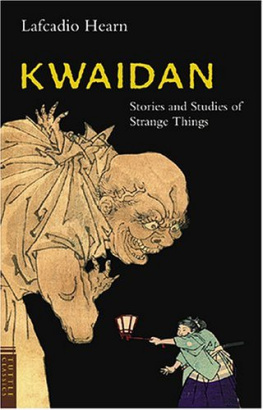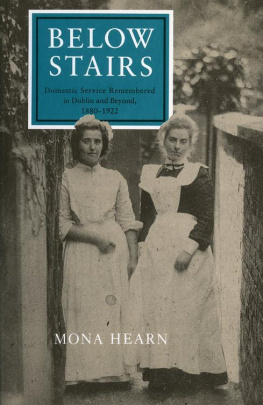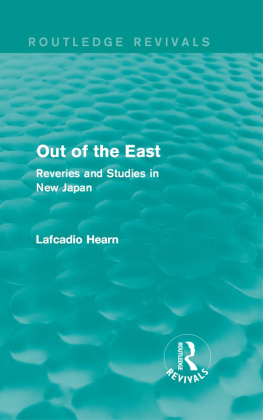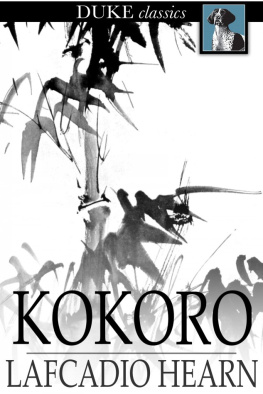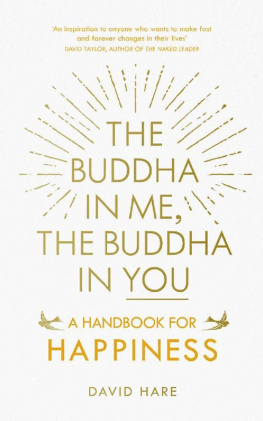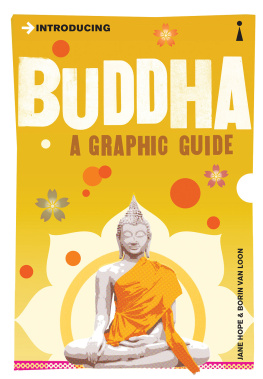Hearn - Gleanings In Buddha-Fields
Here you can read online Hearn - Gleanings In Buddha-Fields full text of the book (entire story) in english for free. Download pdf and epub, get meaning, cover and reviews about this ebook. year: 1897, publisher: Cosimo Classics, genre: Romance novel. Description of the work, (preface) as well as reviews are available. Best literature library LitArk.com created for fans of good reading and offers a wide selection of genres:
Romance novel
Science fiction
Adventure
Detective
Science
History
Home and family
Prose
Art
Politics
Computer
Non-fiction
Religion
Business
Children
Humor
Choose a favorite category and find really read worthwhile books. Enjoy immersion in the world of imagination, feel the emotions of the characters or learn something new for yourself, make an fascinating discovery.

- Book:Gleanings In Buddha-Fields
- Author:
- Publisher:Cosimo Classics
- Genre:
- Year:1897
- Rating:4 / 5
- Favourites:Add to favourites
- Your mark:
- 80
- 1
- 2
- 3
- 4
- 5
Gleanings In Buddha-Fields: summary, description and annotation
We offer to read an annotation, description, summary or preface (depends on what the author of the book "Gleanings In Buddha-Fields" wrote himself). If you haven't found the necessary information about the book — write in the comments, we will try to find it.
Hearn: author's other books
Who wrote Gleanings In Buddha-Fields? Find out the surname, the name of the author of the book and a list of all author's works by series.
Gleanings In Buddha-Fields — read online for free the complete book (whole text) full work
Below is the text of the book, divided by pages. System saving the place of the last page read, allows you to conveniently read the book "Gleanings In Buddha-Fields" online for free, without having to search again every time where you left off. Put a bookmark, and you can go to the page where you finished reading at any time.
Font size:
Interval:
Bookmark:

Peter Hopkins and Kaori OConnor
| The National Faith of Japan | D.C. Holtom |
| The Japanese Enthronement Ceremonies | D.C. Holtom |
| History of Japanese Religion | Masaharu Anesaki |
| Ainu Creed and Cult | Neil Gordon Munro |
| Japan: Its Architecture, Art and Art Manufactures | Christopher Dresser |
| An Artists Letters from Japan | John La Farge |
| Japanese Girls and Women | Alice M. Bacon |
| The Kwaidan of the Lady of Tamiya | James S. de Benneville |
| The Haunted House | James S. de Benneville |
| We Japanese | Frederic de Garis and Atsuharu Sakai |
| Shogi: Japanese Chess | Cho-Yo |
| The Nightless City of the Geisha | J. E. de Becker |
| Landscape Gardening in Japan | Josiah Conder |
| Things Japanese | Basil Hall Chamberlain |
| The Gardens of Japan | Jiro Haneda |
| it Japanese Rituals and the Revival of Pure Shinto | Sir Ernest Satow with Karl Florenz |
| History of Japanese Thought | Hajime Nakamura |
| The Mikados Empire | W. E. Griffis |
| Quaint Customs and Manners of Japan | Mockjoya |
| Japanese Homes and Their Surroundings | Edward S. Morse |
| Japanese Buddhism | Charles Eliot |
| Lafcadio Hearns Gleanings in the Buddha-Fields | Lafcadio Hearn |
| In Far Japan | Frank H Hedges |
| Japanese Aspects and Destinies | W. Petrie Watson |
| Lafcadio Hearns Japan | Lafcadio Hearn |
| A History of Japan | Hisho Saito |
| Japan As It Was And Is | Richard Hildreth |
| The Japanese Nation | Inazo Nitobe |

Kegan Paul Limited

Font size:
Interval:
Bookmark:
Similar books «Gleanings In Buddha-Fields»
Look at similar books to Gleanings In Buddha-Fields. We have selected literature similar in name and meaning in the hope of providing readers with more options to find new, interesting, not yet read works.
Discussion, reviews of the book Gleanings In Buddha-Fields and just readers' own opinions. Leave your comments, write what you think about the work, its meaning or the main characters. Specify what exactly you liked and what you didn't like, and why you think so.

